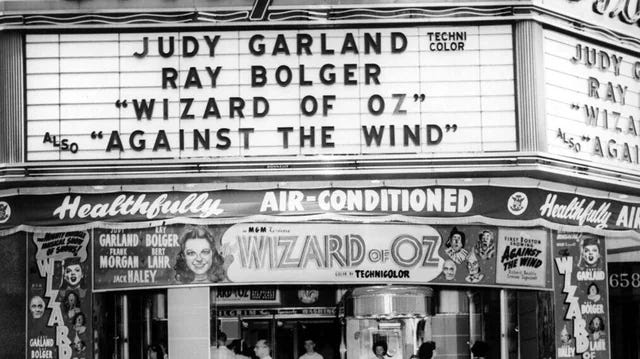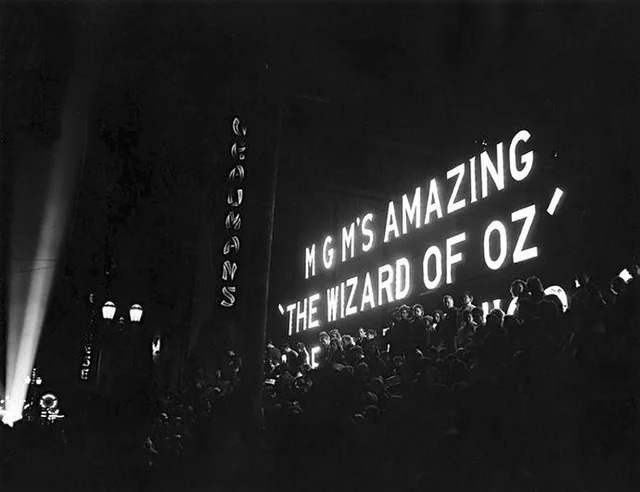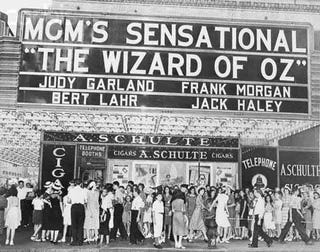On This Day 1939: The Wizard of Oz Premieres
As The Wizard of Oz celebrates its enduring legacy, the story of Buddy Ebsen’s near-fatal illness in 1938 reminds us of the unseen sacrifices behind Hollywood’s most magical films.
Remembering the Tin Man Who Never Made It to Oz
On 15 August 1939, The Wizard of Oz premiered in Hollywood, bringing to life a Technicolor fantasy world that would go on to charm audiences for generations. Judy Garland’s Dorothy, with her ruby slippers and wide-eyed innocence, walked the yellow brick road alongside the Scarecrow, the Cowardly Lion, and the Tin Man.
For most viewers, the Tin Man will always be Jack Haley. Yet the role almost belonged to someone else entirely – and the reason for that change was a near-tragedy that unfolded the previous October. It is a part of Hollywood history rarely told, but it reminds us that even the most magical films can have stories of hardship woven into their making.
October 1938 – A Sudden Collapse
It is late in the evening of October 21st, 1938, in Los Angeles. Actor Buddy Ebsen, the original Tin Man, lies in bed, shuddering in pain. His wife sits beside him, reaching to his side in an attempt to comfort him, but her worry grows with every minute.
Buddy holds out his trembling hands. They are curled into tight fists, stiff and unnatural. At only 30 years old, he is a healthy, physically strong man, known for his dancing and athleticism. Yet tonight he feels as if something inside him is shutting down.
His day had begun with discomfort, a deep ache in his head and hands. By evening, that pain had intensified. Now, his chest feels tight and every breath comes with a sharp, searing sensation. The ambulance his wife has called cannot arrive quickly enough.
From Career High to Life-Threatening Low
Only a fortnight earlier, Buddy had started filming his scenes as the Tin Man. The costume, designed to shimmer under the hot studio lights, was paired with heavy metallic makeup to give his skin a silver sheen. The excitement of playing such an iconic role was enough to make him endure long hours under the lights and in the costume.
From the very first days on set, he had noticed he was not feeling quite right. The fatigue, the aches, the occasional shortness of breath – all could be dismissed in the adrenaline of a major production. But the symptoms grew worse, and on that October night, they reached a frightening climax.
The Race to Hospital
When the ambulance finally arrived, the paramedics found Buddy struggling for breath, his skin pale and his heart racing. They wasted no time getting him to hospital.
The journey was painful, every bump in the road jarring his chest. At the hospital, doctors began working to stabilise him. Tests revealed he was in respiratory distress. His lungs were inflamed and his oxygen levels dangerously low.
The cause was shocking – the silver makeup used for his character contained aluminium powder. Under the intense heat of the lights, tiny metallic particles had been inhaled, coating his lungs and triggering a severe reaction. Buddy’s body was effectively being poisoned from the inside.
Hollywood Moves On
With filming schedules tight and studio executives unwilling to wait, a decision was made. Buddy would be replaced. Jack Haley stepped into the role, and the makeup was reformulated to remove the dangerous aluminium powder.
For Buddy, the experience was devastating. The role of the Tin Man could have been career-defining. Instead, it became a personal disaster. He faced weeks of recovery, rebuilding his health while knowing the production had carried on without him.
A Slow Return to the Spotlight
Buddy’s recovery took time. The damage to his lungs required rest, and his strength had been sapped. In the 1930s, there was little in the way of workplace safety standards for film actors. The expectation was to endure whatever was necessary for the sake of the picture.
When Buddy returned to acting, he moved on to other projects. His career eventually flourished, particularly in television, with iconic roles such as Jed Clampett in The Beverly Hillbillies. But the shadow of The Wizard of Oz remained – a reminder of how quickly an opportunity could be lost.
The Premiere – Without the Original Tin Man
On 15 August 1939, The Wizard of Oz opened to the public. The film dazzled audiences with its ground-breaking use of Technicolor, memorable songs, and timeless story. Children sang Somewhere Over the Rainbow, and the yellow brick road became a symbol of cinematic magic.
But Buddy Ebsen was nowhere on screen. His work as the Tin Man had been erased and replaced, his ordeal unknown to most who watched the finished film. For many years, the public had no idea of the suffering behind the production’s bright, fantastical exterior.
Behind the Magic
The story of the Tin Man’s original actor is just one of many difficulties during the making of The Wizard of Oz. Margaret Hamilton, who played the Wicked Witch of the West, suffered burns during a pyrotechnics scene. Bert Lahr, the Cowardly Lion, endured sweltering heat in a costume made from real lion pelts.
In an age before modern safety regulations, actors often paid a high physical price for their craft. Buddy’s story is perhaps the most severe example, as his health was permanently affected by the role.
A Cautionary Tale
Today, on the anniversary of the film’s premiere, it is worth remembering that the joy and wonder of The Wizard of Oz came at a cost. The image of the Tin Man is beloved around the world, but behind that character is a man who never got to finish the journey to the Emerald City.
Buddy Ebsen’s ordeal became a cautionary tale in Hollywood, a reminder that no role is worth risking a performer’s health. It also helped push the industry towards safer working practices, albeit slowly.
The Legacy of a Forgotten Tin Man
While Jack Haley’s portrayal remains the one audiences know and love, Buddy Ebsen’s story adds another layer to the legacy of the film. It speaks of resilience, of survival, and of the unpredictability of a life in show business.
Ebsen went on to enjoy a long career, but perhaps his greatest contribution to The Wizard of Oz was one that never made it to the screen – the lesson that safety should come before spectacle.
Looking Back on August 15th
Eighty-six years after its premiere, The Wizard of Oz still captivates audiences. Its characters, songs, and visual style have stood the test of time. Yet today, as we mark the anniversary of that premiere, the story of the Tin Man who never made it to the screen is an important reminder of the real people behind the magic.
Buddy Ebsen’s night of agony in October 1938, just months before the film’s debut, was a hidden chapter in the making of one of cinema’s greatest achievements. His experience deserves to be remembered, alongside the yellow brick road, the Munchkins, and the sparkling Emerald City.




